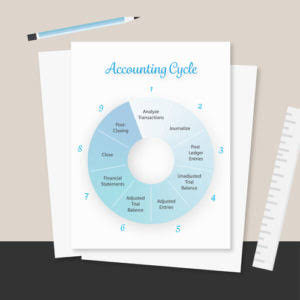
Because retention is often held for a long period of time, it can create cash flow problems for contractors. Contractors must weigh whether to use a mechanics lien to protect their payment rights. This gets sticky because unearned revenue it often takes longer to get paid retention than the lien deadline allows. Because retention is withheld from each payment and paid at a later date, the unpaid funds have to be recorded and tracked accurately. It can significantly impact the financial standing of contractors, especially when working on projects with a small profit margin.
- This means they can experience the same cash flow issues as primary contractors.
- Builtfront’s features also help with client management, ensuring clear communication and timely updates on project status and payments.
- Download this free payment schedule template to outline when and how much will be paid to contractors during a project.
- I have heard the industry standard is 10% of the overall project is given to project closeout.
- In accounting, firms or clients using a contractor for their work have to record the retainage as a liability.
- The amount of retainage is usually between 5-10% of the total contract price.
- You pretty much have to “make it” track it – especially if you want your books to be accurate.
How Retainage Affects Construction Tax Liabilities

The amount of retainage gets specified before the construction work starts in the construction contract itself. Hence, in most cases, the percentage of the amount varies according to the type of project. Finally, when parties have agreed to retainage, it is vital that general and subcontractors plan for less upfront income throughout the project. Though retained monies will eventually be released, a cash crunch will likely be felt in the short term. Filling out a pay application correctly double declining balance depreciation method and completely is important if you want to collect your payment.
- From digital invoicing to invoice approvals, and lien management to payingretainage, cloud-based financial management softwarecan help construction businesses of all sizes.
- Moreover, PandaDoc’s Contract Negotiations feature lets you view and comment on contract changes in a shared workflow 一 allowing ease of negotiating retention.
- When setting a retainage percentage, there are a few factors that are essential to consider, specifically, in construction.
- In some situations, this may persuade clients to forego the retainer entirely.
- This formal document is commonly the first legal step to take to resolve a dispute.
Sec. 382 and exceptions to the segregation rules
- In a perfect world, companies would receive payment immediately after project completion.
- To protect your firm, you should insist on payments being released as soon as the project is completed, if not sooner.
- When retainage is used on most of their contracts, construction companies are especially exposed to cash flow problems.
- This is a very unique practice specific to the construction industry, but within the industry, it’s extremely popular.
- Each payment is subject to a reduction based on the negotiated retainage rate.
- Staying on top of retainage is part of maintaining a financially healthy construction business.
This means that subs have to wait until a project is finished before making a dime of profit. In cases where retainage exceeds the profit margin, progress payments might not even be enough to cover labor and material costs. Say you’re working on a $100,000 project, and the retention rate is 10%. Retained money is usually withheld from all parties until the very, very end of the project. Some states have setlimitations on how much can be withheld, and that can vary depending on whether it’s apublic project or a private project.

What Is Underbilling? Construction Industry Accounting

It provides a space to input the percentage withheld, which should be multiplied by the “Net Total to Date” in the line above. If you don’t want your employer to withhold cash retention, you can opt to pay for a retention bond instead. Then if there’s an issue with your work or project, your client will benefit from the bond. They can file a claim against the bond for any losses they suffer due to project incompletion or defects.
- ProjectManager is ideal for managing retainage in construction because it combines scheduling, resource management and real-time tracking in a single platform.
- Understanding the distinction helps owners manage financial risk and ensures contractors are fairly compensated for properly completed work.
- When the retention payment is made, it is posted against accounts payable to clear the amount owing.
- If the party responsible (owner, general contractor, or subcontractor) does not release retainage in accordance with legal requirements, they will incur interest at the rate of 1% per month.
- Ensure that you provide all the necessary paperwork and details correctly, as any missing or incorrect information may lead to GCs rejecting your pay app.
- Withdrawing retainage in construction is not forbidden in Australia, so owners have the right to withhold retention.
Contract Liability

This issue can be avoided by establishing a clear contractual definition of substantial completion and a clear deadline for completion and retainage release. When examining and agreeing to a budget for your next construction project, whether public or private, there are certain factors to consider as a contractor. Retainer protects clients and provides a financial incentive for contractors when used effectively. However, both sides of the contract have exploited retainage over the years. Beyond the prime contractor, retainage funds are frequently delayed in arriving. To counter these unfavorable characteristics, retainage-oriented state legislation is being introduced around the country.

These bonds are normally furnished on agency-provided forms, which should be reviewed by the retainage vs retention agency’s legal counsel and risk manager before the contract is signed. Cities, towns, and water-sewer districts may require the bond be payable to the agency itself. For all other local governments, the bond must be payable to the State of Washington. This means they can experience the same cash flow issues as primary contractors. The owner must pay retainage to the contractor (and they to the subcontractors) within the period specified in the contract. For example, owners and primary contractors cannot retain more than 5% of the contract price in California.
